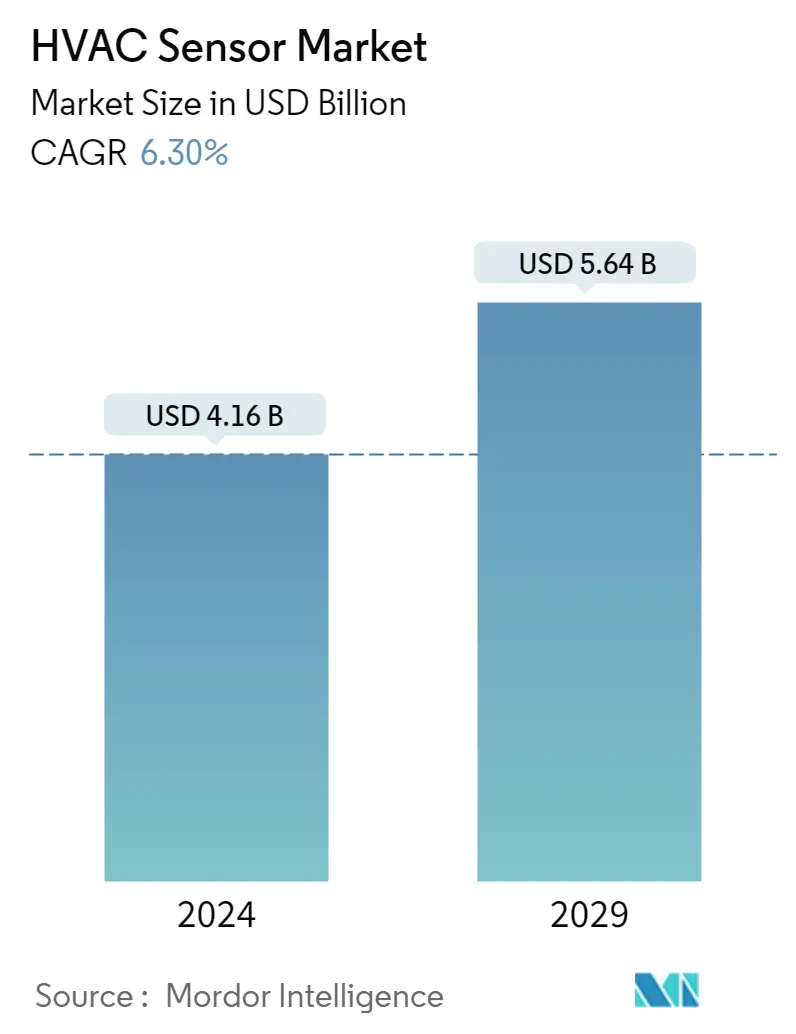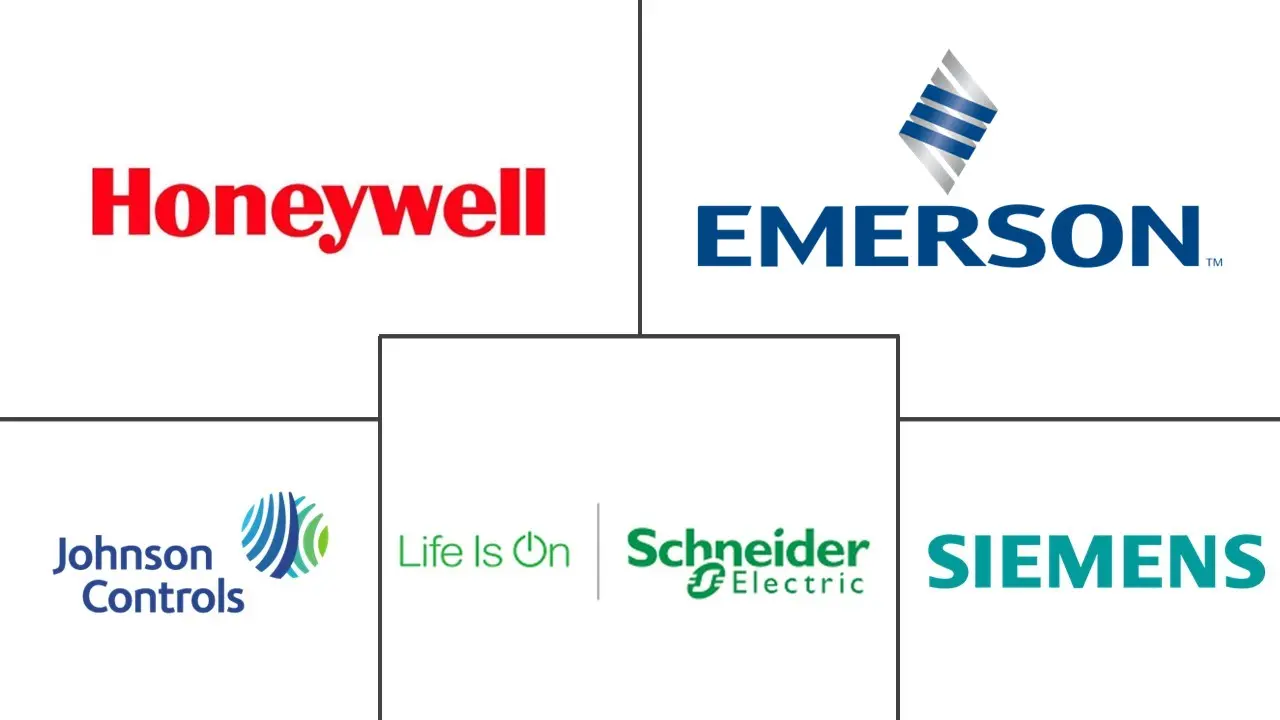Market Size of HVAC Sensor Industry

| Study Period | 2019 - 2029 |
| Market Size (2024) | USD 4.16 Billion |
| Market Size (2029) | USD 5.64 Billion |
| CAGR (2024 - 2029) | 6.30 % |
| Fastest Growing Market | Asia Pacific |
| Largest Market | Asia Pacific |
Major Players
*Disclaimer: Major Players sorted in no particular order |
Need a report that reflects how COVID-19 has impacted this market and its growth?
HVAC Sensor Market Analysis
The HVAC Sensor Market size is estimated at USD 4.16 billion in 2024, and is expected to reach USD 5.64 billion by 2029, growing at a CAGR of 6.30% during the forecast period (2024-2029).
The HVAC sensors regulate and monitor various activities like air temperature, pressure, and quality in end-user buildings like commercial and residential buildings. Hence, HVAC sensors are being commonly used owing to the increasing need to reduce energy consumption and enhance energy efficiency.
- The rapid rise in industrialization and urbanization worldwide is one of the primary factors driving the market's growth. The significant increase in the construction of different commercial and residential buildings worldwide is creating considerable demand for HVAC sensors as a space heating and cooling system, ventilation control, humidity control, and air filtration. For instance, according to the IEA, the global building construction sector's value increased by 5% compared to the previous year, reaching over USD 6.3 trillion.
- Increasing sensor compatibility with the Internet of Things (IoT) platform is gradually becoming a prerequisite for facilitating remote monitoring and control. IoT-connected devices have opened massive opportunities for sensors in several applications like industrial, medical, consumer electronics, automotive, etc. According to Cisco's Annual Internet Report, by 2023, there is expected to be nearly 30 billion network-connected device connections, up from 18.4 billion in 2018. By 2023, IoT devices were expected to make up 50% (14.7 billion) of all networked devices, up from 33% (6.1 billion) in 2018. Such an increase in IoT devices would drive the growth of the studied market.
- Heating, ventilating, and air-conditioning in a commercial building usually consume more energy than any other activity in the building. According to U.S. Department of Energy studies of commercial buildings, HVAC equipment usually accounts for over 40% of a building's energy usage. Owing to the huge amount of energy, HVAC systems use sensors to improve equipment efficiency, which results in significant reductions in building operating costs.
- For instance, HVAC monitoring systems include IoT sensors for monitoring temperature, occupancy, fresh air intake, and other indoor climate conditions. Controllers and actuators turn the data collected from these sensors into action. Some actions are immediate and preprogrammed into the system. Smart building management platforms with machine learning capabilities that provide in-depth insights and continuously refine adjustments carry out more complex analyses.
- Furthermore, energy standards and building codes have also significantly driven the design of energy efficient buildings over the past decade. For instance, the US Green Building Council's (USGBC) leadership in the Energy and Environmental Design (LEED) Green Building Rating System has raised awareness of the need for building designs that use energy efficiently. As such, several states in the country have mandated the use of the LEED rating system for government buildings.
- Such initiatives indicate the importance of energy conservation in buildings. Hence, HVAC sensors are being commonly used because the need to reduce energy consumption is increasing, enhancing energy efficiency. As a result, the government and regulatory organizations are primarily focusing on how HVAC controls can reduce energy consumption in buildings.
- The pandemic significantly influenced the HVAC industry, as demand for the sensors observed a significant drop during the initial months, owing to lockdown restrictions and businesses refraining from investing in new equipment. Due to the pandemic, many construction projects were halted across the world. The reduction in construction activities across the commercial, residential, and industrial sectors temporarily dampened the demand for HVAC sensors, including those for air handling units.
- Moreover, due to the production shutdown in countries such as China, multiple industries observed a shortage of supply of various products during February and March 2020. Due to supply chain disruption, the price of raw materials increased, impacting the overall pricing of the sensors.
